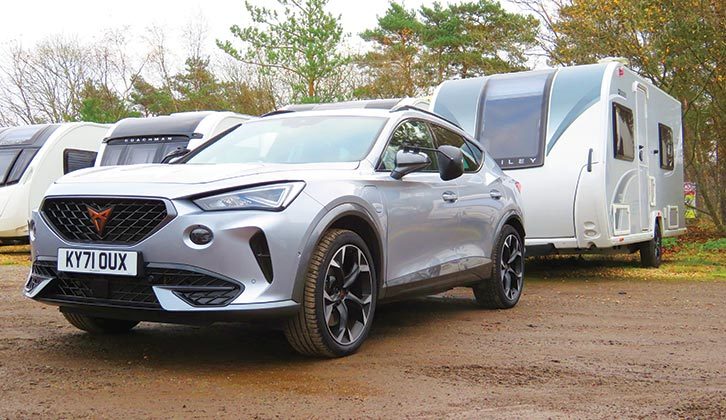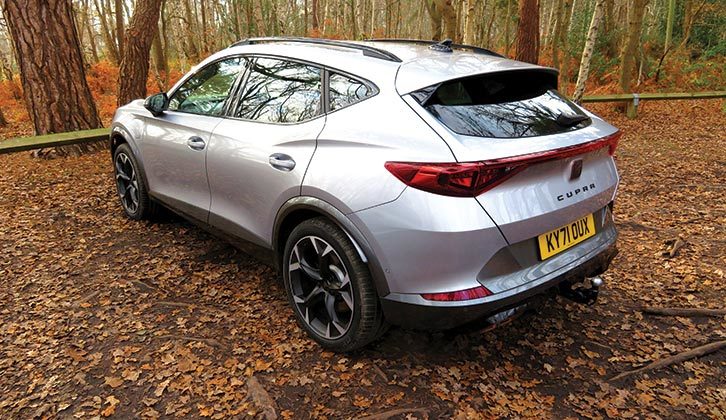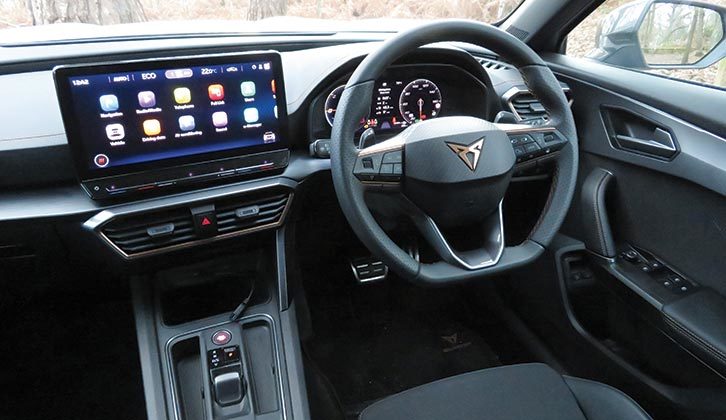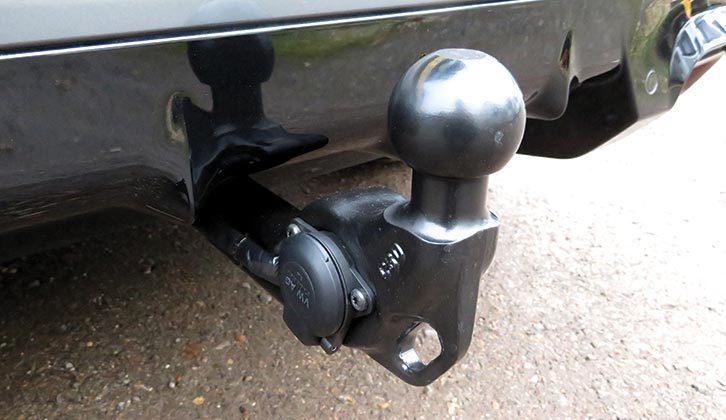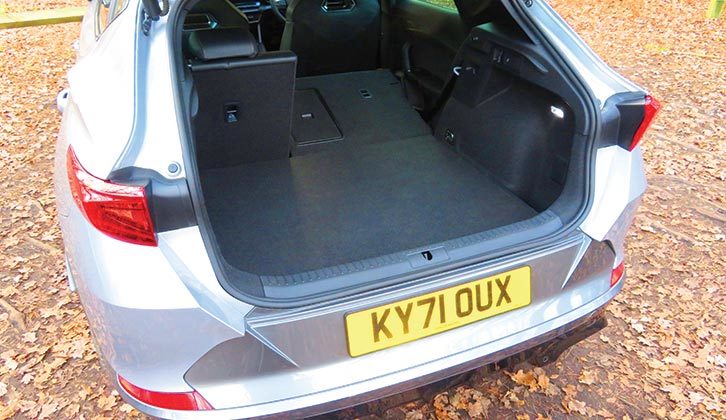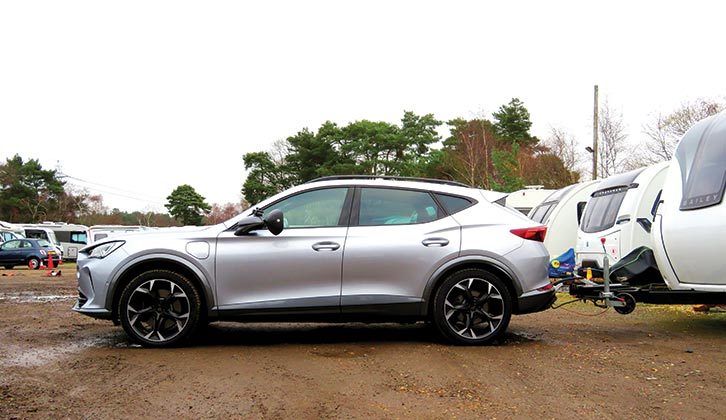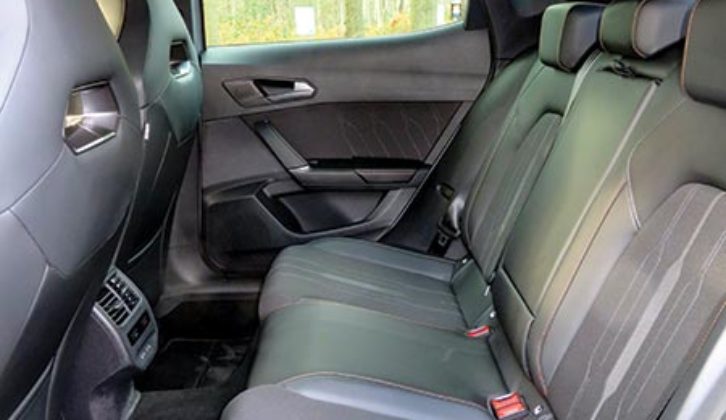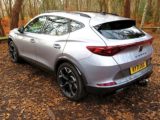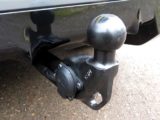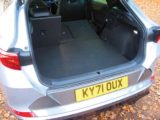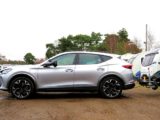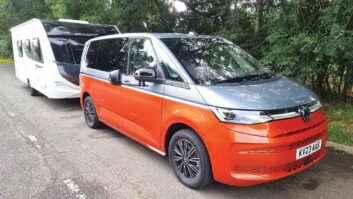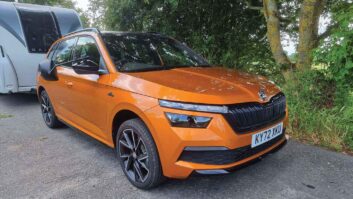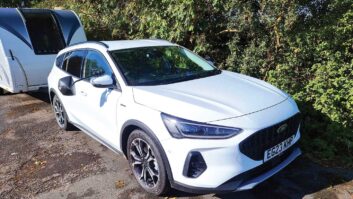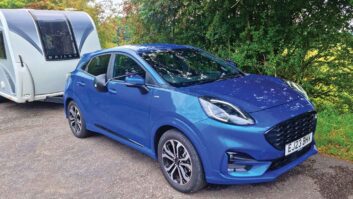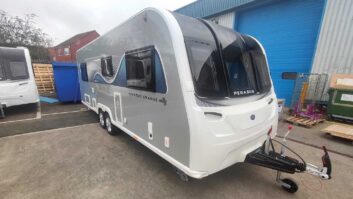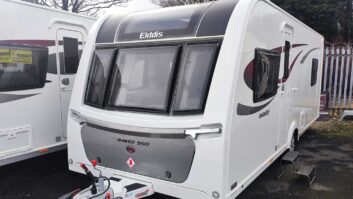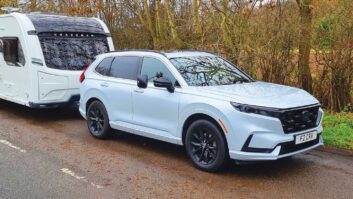What’s new?
Cupra is the sporty spin-off from Seat, the Volkswagen Group’s Spanish brand. The Cupra Formentor eHybrid 1.4 TSI 245PS VZ1 may have things in common with Seats under the skin, but there’s no direct equivalent in the Seat range. This is what Cupra can do when given free rein.
Cupra calls the Formentor a coupé crossover. It promises to combine good looks with a family SUV’s practicality.
There’s a range of powertrains, but we’re testing the plug-in hybrid with 245hp from the combined efforts of the 1.4-litre petrol engine and the powerful electric motor.
What are we looking for?
The Formentor looks great, but does style compromise practicality? How well does the plug-in hybrid model tow?
Towing ability of the Cupra Formentor eHybrid 1.4 TSI 245PS VZ1
The Cupra Formentor range starts with a 150hp petrol, which looks good value, priced from £28,260. You’ll need deeper pockets for the plug-in hybrid, though, which starts from £36,795 for the 204hp.
Upgrade to the 245hp hybrid and you’ll pay just under £40,000. That’s a lot for a relatively small car, but the Cupra eHybrid has impressive towing credentials.
The kerbweight of 1704kg is 267kg heavier than the lightest petrol model, making for much more favourable matching ratios. The legal towing limit of 1700kg is healthy for a plug in hybrid of this size and weight. We matched the Formentor to our Bailey Discovery D4-4, with a MiRO of 1059kg and an MTPLM of 1206kg. Ideally we’d have preferred a heavier van, but even allowing for the Bailey’s lighter weight, the Cupra towed it well.
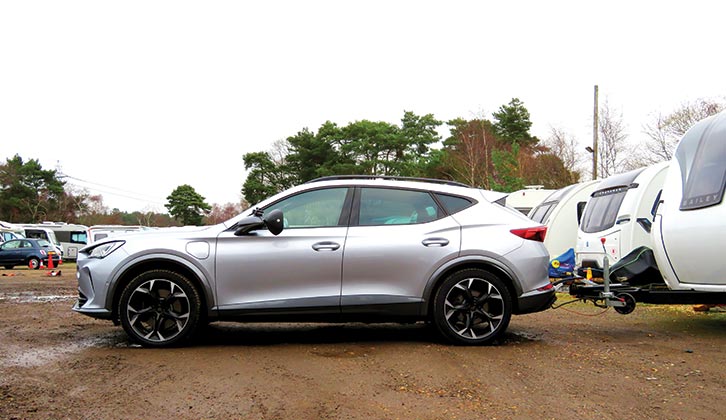
The electric motor delivers maximum pulling power at low speeds, so the Cupra accelerates briskly from junctions. In fact, care needs to be taken when pulling away to avoid wheelspin, especially making a hill start. A lot of power is channelled through the front wheels, and the Formentor doesn’t always use that muscle cleanly.
There are four-wheel-drive versions, but only if you choose a 190hp or 310hp petrol. We’d expect these to tow better than the hybrid in bad weather, but they are not as heavy and will cost a lot more to fuel.
Go easy on the throttle pulling away and the Formentor is very quick, with enough performance to nip past dawdling traffic. Holding speed on motorway inclines is easy, even when the battery’s charge runs low.
The Cupra Formentor is stable as well as quick. We had no need to make any steering corrections, even when overtaking HGVs or on exposed sections of road.
It’s at home on country roads as well as motorways, with direct steering and well controlled suspension helping the driver to keep car and caravan on course.
Reversing a caravan onto your pitch is reasonably straightforward, but hitching up again slightly less so. That’s because the Cupra is reluctant to creep smoothly at very low speeds. It tends to stay still or move a little too urgently when reversing back towards the van.
With thick rear pillars and a high boot line, rearward visibility is poor, but the rear-view camera is a great help.
The towbar and electrics cost £735, and drop down at the press of a button. In familiar VW Group style, the electrical socket is on the side of the towbar, where it’s easy to reach without the back bumper getting in the way.
If you plan to shop for a secondhand Formentor, check if the car was supplied from new with towing gear, or at least towbar preparation. It might not be possible to retrofit a towball, unless the necessary groundwork has been done at the factory.
All told, the Formentor tows well, but it’s putting a great deal of power through the front wheels. It’s a shame that the eHybrid model isn’t available with four-wheel drive to make its performance more useable, especially in wet weather.
Solo driving
You could make the same criticism about everyday driving. Look to make full use of the Formentor’s performance, and the front wheels can be a bit unruly.
Drive smoothly to put less strain on the front tyres, and you will still be able to make very rapid progress, but four-wheel drive would allow the driver to make full use of the Cupra’s power without feeling like a hooligan.
This spec of Formentor comes with adjustable dampers, which allow the suspension to be set to Comfort, Sport, Cupra, or Individual settings. Comfort is the best choice for most drivers, and most roads. Sport and Cupra (think Sport, but sportier!) are very firm, and only make sense on a smooth and deserted road.
The eHybrid is a heavy car for its size, which takes the edge off the Formentor’s agility. Even so, it’s satisfying to drive, with precise steering and firmly controlled suspension.
As you’d expect of a hybrid vehicle, the Formentor uses regenerative braking to top up the batteries. This helps with fuel economy, but does make for a rather wooden and inconsistent brake pedal.
It sometimes takes a much firmer press than you’d expect to slow the car down.
Space and practicality in the Cupra Formentor eHybrid 1.4 TSI 245PS VZ1
There’s lots of space inside the Formentor’s cabin. Both driver and passenger sit lower to the ground than in most crossovers and SUVs, but that seems quite appropriate, given Cupra’s sporting brief.
The bucket seats are heavily bolstered to provide plenty of support when cornering, but they aren’t so constraining that you need to be whippet-thin to get comfortable.
There’s a digital display in front of the driver, rather than conventional dials, which can be configured to show different information. For example, it can be handy to have a map and directions right in front of you while using the sat nav.
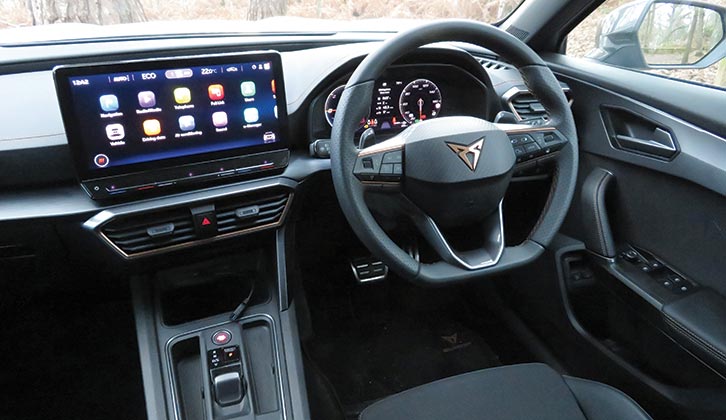
However, we’re rather less convinced by the car’s 12-inch infotainment system. It can be a little fiddly. The temperature settings are adjusted with touchpads below the screen, rather than proper buttons, and these can be distracting to use on the move.
On the other hand, though, the Cupra’s cabin is very well made and the interior design almost lives up to the car’s dramatic exterior.
Rear-seat passengers are much better catered for than you might expect from the coupé-like roofline, with generous legroom and more than adequate headroom. The thick transmission tunnel in the middle of the floor and the shaping of the rear bench mean two passengers will be more comfortable than three.
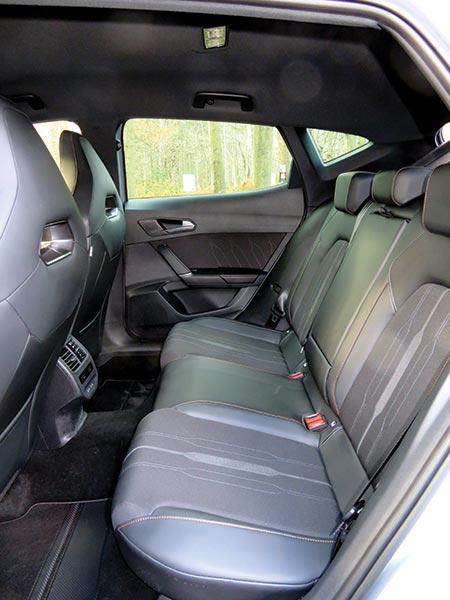
We’d be giving the Formentor a higher score for practicality if it wasn’t for the modest boot space. Two-wheel-drive petrol cars have 450 litres, while 4x4s provide 420 litres. In the hybrid, that drops to just 345 litres, so a family of four would need to travel light, or make good use of storage space in their van.
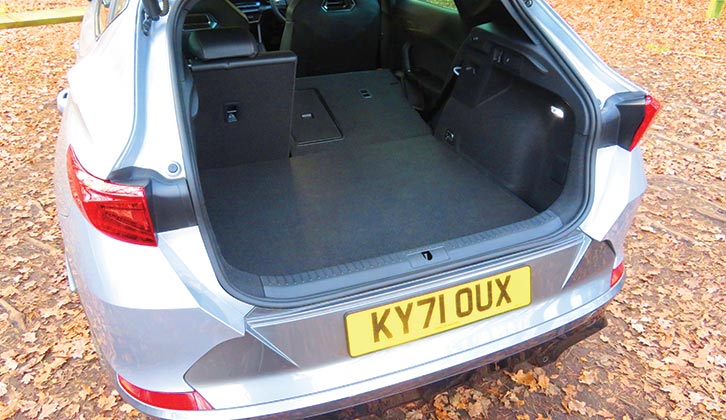
Buying and owning a Cupra Formentor eHybrid 1.4 TSI 245PS VZ1
The Formentor eHybrid would make most sense for company car drivers, who can benefit from very favourable tax rates because of the vehicle’s low emissions figures.
For private buyers, the premium over a regular petrol model is more difficult to justify. However, with an official all-electric range of just under 34 miles, many everyday trips can be achieved without using fossil fuel. A recharge takes five hours from a 2.3kW source.
We started on our towing economy route with the Cupra’s battery charged to 86%, and after 53 miles, the car had returned 31.8mpg.
In solo driving with the battery running low, we saw around 40mpg.
The Formentor is also well equipped. VZ1 spec includes satellite navigation, wireless phone charging, Apple CarPlay and Android Auto, three-zone climate control and a heated steering wheel, among others.
The safety experts at Euro NCAP have awarded the Formentor the maximum five-star rating.
Verdict
The Cupra Formentor is distinctive, economical and quick. In this specification, though, there are some frustrations. Most obviously, the eHybrid puts a lot of power through the front wheels. We experienced some wheelspin towing in the dry, so it’s reasonable to assume the issue would be more noticeable in wet weather.
In conventionally powered Formentors, Cupra has done a fine job of making a rakish-looking car with good luggage space. However, the plug-in hybrid loses over 100 litres of space compared with two-wheel-drive petrols, making a family’s holiday luggage a tight fit.
That’s a shame, because there’s plenty of room for passengers. Four can travel very comfortably, with lots of legroom in the back and more headroom than you’d expect, given the sloping roofline. The cabin is also well finished and there’s loads of standard kit.
When it comes to towing, the Formentor is rapid and stable, both traits of the best tow cars. Even allowing for the Bailey’s low weight, the Cupra towed with great composure on A-roads and motorways.
Leave the caravan behind and the Formentor is enjoyable to drive, with precise steering and neat handling. With the petrol engine and electric motor working together, the eHybrid is very rapid indeed.
With this powertrain, the Cupra Formentor makes most sense for company car drivers, thanks to low tax bills and the possibility of all-electric commuting. For private buyers, despite the eHybrid’s many attributes, a conventional petrol model probably makes more sense.
In detail:
- Price: £39,475
- Retained value after three years: 53%
- Kerbweight: 1704kg
- 85% of kerbweight: 1448kg
- Gross vehicle weight: 2120kg
- Max towing limit: 1700kg
- Gross train weight: 3820kg
- Towball limit: 80kg
- Price of towball and electrics: £735
- Boot size min/max: 345/1415 litres
- Payload: 416kg
- Test conditions: Dry
- Engine size: 1395cc
- Power (hp)/rpm: 150/5000-6000 (petrol engine only)
- Torque (lb ft)/rpm: 250/1550-3500 (petrol engine only)
- Official combined economy: 176.6-188.3mpg
- Towing economy: 31.8mpg
- CO2 emissions: 33g/km
- First year car tax: £0
- Second year car tax: £155
- Insurance group: 24P
Or you could try…
Volkswagen Golf Alltrack: This all weather tow car is a reliable performer.
Seat Tarraco: This solid family SUV provides good value.
If you’ve enjoyed reading this article, why not get the latest news, reviews and features delivered direct to your door or inbox every month. Take advantage of our brilliant Practical Caravan magazine SUBSCRIBERS’ OFFER and SIGN UP TO OUR NEWSLETTER for regular weekly updates on all things caravan related.
Technical Specifications
| Engine Size | 1395 cc |
| Kerbweight | 1704 kg |
| 85% KW | 1448 kg |
| Towball Limit | 80 kg |
| Maximum Towing Limit | 1700 kg |
| Power | 150 bhp |
| Torque | 250 lb ft |
| Offical MPG | 176.6-188.3 mpg |
| Towing MPG | 31.8 mpg |
| CO₂ | 33 g/km |
